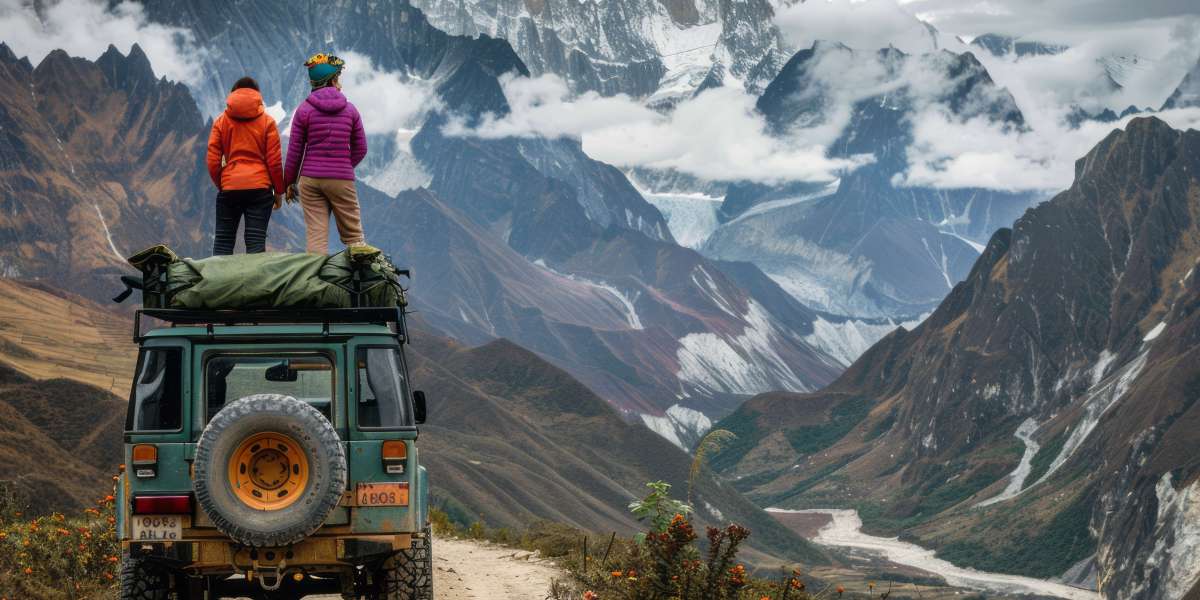The Annapurna Base Camp Trek is one of the most iconic Himalayan journeys, attracting trekkers from around the globe. Renowned for its stunning alpine views, diverse terrain, and rich cultural encounters, the trek is both accessible and rewarding. But many aspiring adventurers often ask: How difficult is the Annapurna Base Camp Trek? In this blog, we break down the various factors that contribute to its difficulty—altitude, trail conditions, weather, and more—to help you assess if this journey is right for you.
1. Trek Overview: What to Expect
The Annapurna Base Camp Trek typically takes 7 to 12 days, depending on your itinerary and pace. The trek covers a round-trip distance of about 65–75 km and reaches a maximum elevation of 4,130 meters (13,550 ft) at Annapurna Base Camp. The trail winds through charming Gurung and Magar villages, terraced fields, bamboo forests, and glacial valleys, offering a varied landscape that keeps the journey exciting.
2. Difficulty Level: Moderate with Manageable Challenges
The Annapurna Base Camp Trek is generally rated as moderate in difficulty. This means that while it’s not technically demanding (no ropes, mountaineering skills, or special equipment required), it does present physical and mental challenges that require preparation.
Here’s a breakdown of key factors:
a. Altitude and Acclimatization
One of the main concerns on any Himalayan trek is altitude. At 4,130 meters, Annapurna Base Camp lies well within the range where altitude sickness (Acute Mountain Sickness - AMS) can occur. However, compared to treks like Everest Base Camp or Annapurna Circuit, ABC rises gradually, offering better acclimatization opportunities.
Tips to manage altitude:
Follow a gradual ascent plan with proper acclimatization days.
Hydrate frequently.
Avoid alcohol and smoking.
Know the symptoms of AMS (headache, dizziness, nausea) and descend if needed.
b. Trekking Distance and Daily Walking Hours
Most trekking days involve 5–7 hours of walking, often over steep uphill and downhill terrain. The trails are well-maintained but can be physically tiring, especially with continuous elevation gain.
Trail example:
Chhomrong to Himalaya: involves long descents followed by sharp climbs.
Deurali to ABC: the final push gains substantial altitude in a short span.
A basic level of cardiovascular fitness, stamina, and leg strength is essential to enjoy the trek.
c. Weather and Seasonal Difficulty
The time of year greatly affects the difficulty level of the Annapurna Base Camp Trek.
Spring (March–May): Pleasant temperatures, blooming rhododendrons, and clear views make this an ideal season.
Autumn (September–November): The most popular season due to dry weather and excellent visibility.
Winter (December–February): Snowfall and sub-zero temperatures make the trail more challenging. Snow may block parts of the trail.
Monsoon (June–August): Heavy rains, leeches, and slippery paths add risk and discomfort.
Pro tip: Stick to spring or autumn for the safest and most enjoyable trek.
d. Terrain and Trail Conditions
The trail includes:
Stone staircases (especially near Chhomrong).
Rocky patches and narrow ridges.
Landslide-prone sections near Hinku Cave and Deurali.
Suspension bridges and river crossings.
While no technical climbing is required, the terrain can be tough on the knees and ankles. Trekking poles and proper trekking boots are highly recommended.
3. Who Can Do the Annapurna Base Camp Trek?
One of the best things about the Annapurna Base Camp Trek is its wide accessibility. You don’t need prior high-altitude trekking experience to complete it, but being reasonably fit and mentally prepared is key.
Suitable for:
Trekkers with basic fitness and determination.
First-time high-altitude trekkers looking for a moderate challenge.
Solo trekkers (though a guide/porter is recommended for safety).
Groups or families (with children above 12–14 years).
4. Training Tips for the Trek
While you don’t need to be an elite athlete, physical preparation makes the trek far more enjoyable.
Focus on:
Cardio workouts: hiking, jogging, cycling (at least 3-4 times a week).
Strength training: legs, core, and back.
Hiking practice: with a loaded backpack and on varied terrain.
Training 6–8 weeks prior to the trek will help build stamina and confidence.
5. Common Challenges and How to Overcome Them
| Challenge | Solution |
|---|---|
| Altitude Sickness | Acclimatize, hydrate, descend if symptoms appear |
| Fatigue & Muscle Soreness | Train before the trek, rest adequately |
| Weather Fluctuations | Layer clothing, check weather forecasts |
| Navigation (if solo trekking) | Use GPS, maps, or hire a local guide |
| Crowded trails in peak season | Start early each day, book accommodations in advance |
6. Role of a Guide and Porter
While it’s possible to do the Annapurna Base Camp Trek independently, hiring a licensed guide and porter can ease the physical and mental burden. A guide helps with:
Trail navigation
Emergency situations
Cultural insights
Booking lodges in busy seasons
A porter carries your gear, allowing you to enjoy the trek without the weight of a full backpack.
7. Final Thoughts: Is the Annapurna Base Camp Trek Right for You?
The Annapurna Base Camp Trek strikes a beautiful balance between challenge and accessibility. It offers an immersive Himalayan experience without requiring extreme technical skills or high-risk mountaineering. With the right preparation, mindset, and timing, most people with average fitness can complete this unforgettable journey.
Key Takeaways:
Difficulty Level: Moderate
Max Altitude: 4,130m
Trek Duration: 7–12 days
Best Time: Spring (Mar–May) and Autumn (Sep–Nov)
Fitness Required: Moderate level with endurance training
Recommended: For beginners with preparation and experienced trekkers alike
So, if you're dreaming of standing before the towering Annapurna range, surrounded by snow-capped peaks and glacial valleys, start planning now! The Annapurna Base Camp Trek awaits.



